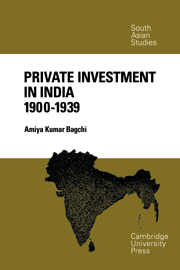In 1900, India, ‘the brightest jewel in the British Crown’, was one of the poorest nations of the world. Lord Curzon, the then Viceroy, and imperial proconsul par excellence, in answer to the critics of British rule, during the debate on the budget for 1901–2, proclaimed India prosperous at Rs. 30 or £2, of income per head per year.
The viceregal statement did not go unchallenged: William Digby produced a massively documented indictment claiming that the average Indian was even less prosperous than Lord Curzon had made him out to be, and that he was getting poorer every year, directly as a result of British rule. F. J. Atkinson, in an attempt to vindicate Curzon's estimate, produced a detailed calculation showing that the income per head of an average subject of British India was Rs. 39·5, or about £2. 13s. od. per year in 1895. The best available estimate for Great Britain in 1901, by contrast, puts the income per head at £52 per year.
Atkinson's estimate for 1895 has been confirmed by Sivasubramonian, who found that the income per head in India (including native states) at current prices was Rs. 42·1 in 1900–1 and Rs. 41·5 in 1901–2. Atkinson also claimed that there was a sizeable improvement in the standard of living of an ordinary Indian between 1875 and 1895: the income per capita had increased from Rs. 30·5 in 1875 to Rs. 39·5 in 1895. This claim was, however, based on questionable assumptions.
